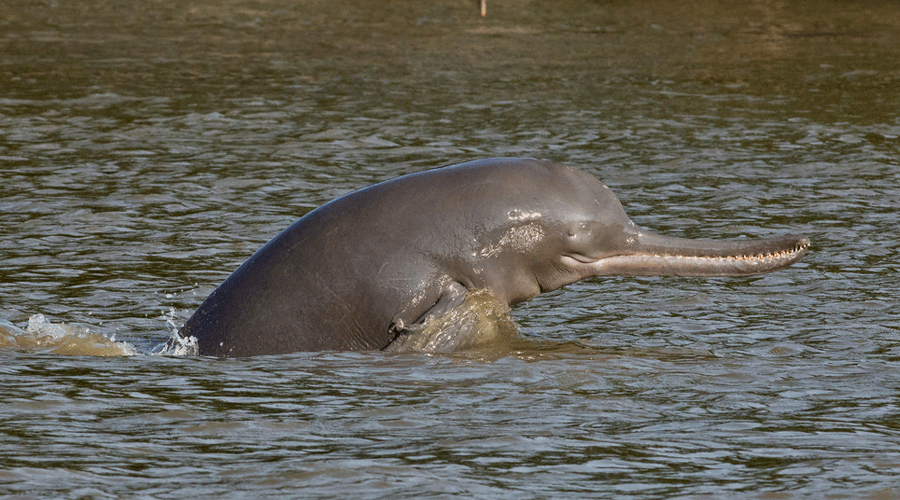The carcass of a Gangetic dolphin was found hanging from a tree in a Murshidabad village near the Hooghly on Tuesday.
The carcass, perforated with what looked like a sharp metal stick, was wrapped in a red plastic sheet. Two tin drums tied together hung just below it.
A group of local volunteers with a wildlife NGO, who brought the matter to the forest department's notice, said the drums were kept to store oil that would drip from the rotting carcass.
The incident took place in Bachra village in Beldanga II block, less than a kilometre from the Ramnagar Ghat by the Hooghly.
A team from the local beat office reached the spot and took away the carcass and picked up a man for questioning, the volunteers said. But the man was released later on Tuesday, they added.
The NGO, Human and Environment Alliance League (HEAL), had in 2019 undertaken a study that revealed that dolphins were being killed for their oil and the trade was thriving along the Hooghly in Murshidabad and Malda.
"Oil extracted from the blubber of the dolphin is used by fishermen as a fish bait. The oil is also used to cure joint pain and gout," said Suvrajyoti Chatterjee, secretary of HEAL.
Dolphins often get trapped in fishing nets when they rise to the surface to get enough air to breathe. But once trapped in nets, they cannot rise to breathe.
"The fishermen know instantly when a dolphin is trapped. But they do not release it. It either dies of breathlessness or is killed by the fishermen. There is a financial incentive to doing that because of the oil trade," said Chatterjee.
In some cases, the carcass is cut open and the blubber chopped into pieces and then stored in a container. In other cases, the carcass is buried or hanged, he added. "The fat dissolves into oil. The idea is to get the body rotting," said Chatterjee.
A local volunteer with the NGO said a carcass sells for anything between Rs 500 and Rs 1,000 in the area. "Dolphin oil is sold between Rs 1,200 and Rs 2,000 in this area. In Farakka, the prices of both the body and the oil are much more because of large scale fishing there," he said.
The Gangetic dolphin, an endangered species according to the International Union for Conservation of Nature, can be found in the Ganga-Brahmaputra-Meghna and Karnaphuli-Sangu river systems of Nepal, India and Bangladesh. It is protected under Schedule I of the Wildlife (Protection) Act, 1972.
Gangetic dolphins already face a serious threat in Bengal from large-scale discharge of municipal waste, siltation and the countless brick kilns that have sprung up along riverbanks and river traffic.
Earlier this month, pictures of kids in Howrah posing with the carcass of a Gangetic dolphin like a trophy had been doing the rounds of social media groups of animal activists.
"We organise regular awareness camps with fishermen. There have been multiple instances in the past, where fishermen have released a dolphin after it got trapped in the net," said Ravi Kant Sinha, the chief wildlife warden of Bengal.











